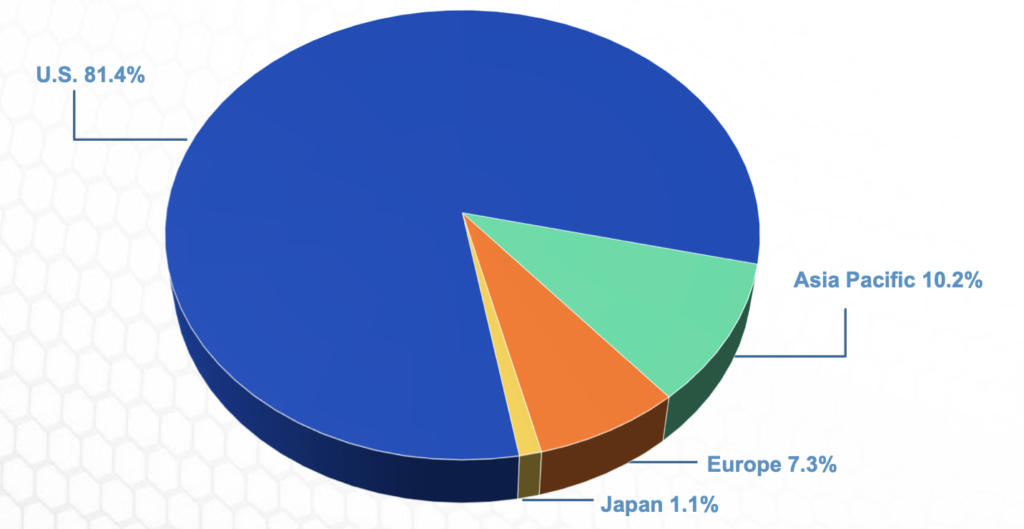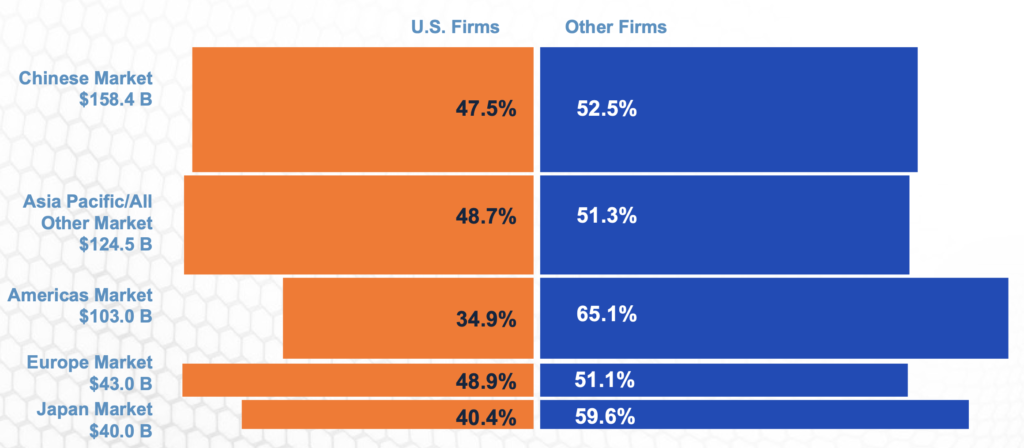
The coronavirus crisis accelerates the conflict intention of the USA against China, especially in the field of technological power, a key domain to decide the dominant position of a country in the new world order. Though undoubtedly as one of the leading economies of the modern digital age on a global scale, without the ability to manufacture the most advanced and common used chips, China can only slightly win national dignity through tough but pale foreign speeches in the cost of constant retreats of Chinese information and technology companies in semiconductor markets controlled by the USA.
What is a semiconductor? Why is it so important?
A semiconductor is a substance with resistivity (102 to 0.5 ohm-m) between an insulator and a conductor. The electrical resistivity of semiconductor generally decreases strongly with increasing temperature, whereas the resistivity of metal generally increases weakly with increasing temperature. When a suitable metallic impurity such as arsenic is added to a semiconductor, it changes the current-conducting properties of the semiconductor appreciably. Therefore, semiconductor devices play an irreplaceable role in electronics, many types of semiconductor devices are well known and widely used in various systems for quality control and automation today, such as LED (Light Emitting Diode), bipolar transistor, etc.
Compared to electronic valves, semiconductor devices offer the following advantages:
- Low weight and small size
- No power for the filament
- Long service life
- Mechanical ruggedness
- Low power losses
- Low supply voltages
Based on the above definition and properties, almost any device that you can see around you use semiconductors, such as air conditioner, rice cooker, smartphone, digital camera, television, computer, washing machine, refrigerator, bank ATM, train, etc. The usage of semiconductor is deeper and wider than the public acknowledgment of it. Semiconductor to technology is like sunshine to nature, and technology to an economy is like nutrition to flesh and blood. Without the ability to manufacture semiconductor will bury today’s technology in the darkness ahead of its birth, and without advanced technology will starve an economy around other wealthy competitors. Commissioner Thierry Breton pointed out that “without an autonomous European capacity on microelectronics, there will be no European digital sovereignty”, the potential consequence is much more severe than that, an economy weakening in the semiconductor industry will be eventually turned around the stronger one’s finger by all means as it lacks main competitiveness in the information era, and this stronger one has remained to be the USA over half a century, beating every imaginary enemy completely, the first loser was Japan.
After the World War II., the USA supported Japan to rebuild its economy to prevent the expansion of red power. In 1949, Japan formed the Ministry of International Trade and Industry which created a synergy between the Japanese government and the private sectors to improve industrial productivity and adjusted technology imports and after all kinds of imports thus leading to significant economic gains year after year.
With “Investment Inducing Investment” process, Japan gradually was led by metals and chemicals industry, more research and development and production of technology made every Japanese family can afford appliances and electronics. Japanese economy experienced a golden period in the 1960’s, then got stuck but could still smoothly grow in the 1970’s by turning into the technology-intensive industry, decreasing taxes to increase exports, etc. Meanwhile, the USA survived from twice oil crises, a should-be-lackey one at that time had better economic conditions than the-predestined-master, and even took benefit from the latter via budget and trade deficits, the USA declared trade war to Japan in its 6 advantageous industries: textile, steel, television, car, telecommunication and semiconductor. As discussed previously, the semiconductor is a key element in the modern production process and technological products, so most of these industries are centered around the semiconductor.

The USA investigated and sued Japanese companies in the name of dumping, monopolization, governmental leadership and national security; limited the exporting amounts of Japanese products; charged anti-dumping duty on them; stetted suggested but practically must sale price of them; adjusted industrial standards to be favorable to domestic producers and unfavorable to Japanese producers; forced Japanese companies to manufacture products in the USA and to open channels, stores and factories to promote American products; required Japan to increase the market shares of similar products from other competitive countries. These actions were designed for the trade war, following it there also came the economical war and financial war. The miracle of Japanese economy could last longer if it held its semiconductor advantage. Since Japan failed that war, it has been under the shadow of the USA till now. In 2018, over 80% of semiconductors in the USA were produced by its companies, and in every regional market the USA firms have absolute power in semiconductor manufacturing, all firms from all other countries share the remaining market shares.


History easily repeats itself, one after another economy came into prominence credited to rising digital power, then unwillingly loses advantage and forcibly agrees to weaken relevant research, development and production. The last lesson was from Japan, a shining star in the semiconductor industry in the early information era, then fell rapidly during the trade war with the USA. The ongoing trade war between China and the USA even is different from the one between Japan and the USA, but they do have a lot of common features:
- Both involve the largest and the second-largest economies at the time
- Both are triggered by the largest trade surplus with the USA from Japan and China
- Both the powers of discourse belong to the USA as Japan and China highly rely on the American market
Since Japan lost the fight to keep its dominant semiconductor position with the USA, the digital evolution in Japan also gets stuck. “Lack of digital investment by the government has hampered productivity and efficiency at the private sector,” said Takuya Hoshino, senior economist at Dai-ichi Life Research Institute. The last OECD Digital Economy Outlook put Japan at the lowest rank among 31 countries in online procedures, Seiji Kihara, a former Ministry of Finance official commented on the Japanese digitalization process compared with 20 years ago, “They are doing pretty much the same now”.
There are not many economies besides the EU owning the discourse of power in technology, economy and politics against the USA, Japan was one, China is on show, others are less noticeable than the EU. In the face of growing tensions between the USA and China, the EU will be more like the next target than a safe bystander, joining the battlefield immediately is to balance the power of the USA, and to save time to develop European industries to underpin European future with full sovereignty.
An economy, without independent technology, will always serve the one who has it, and cannot own real sovereignty, the EU must “seize the opportunity of data, microelectronics and connectivity”. Europe has all the skills and talents to invest and develop an effective European cyber shield starting from the small but mattering semiconductor.
Remember what happened to Japan, look at what China is suffering and imagine what the EU will face, all can be traced back to semiconductor, small item, large picture and predictable future.
(Source: Nanotec museum / enisa.europa.eu / Reuters.com / Cgtn.com / kknews.cc)



